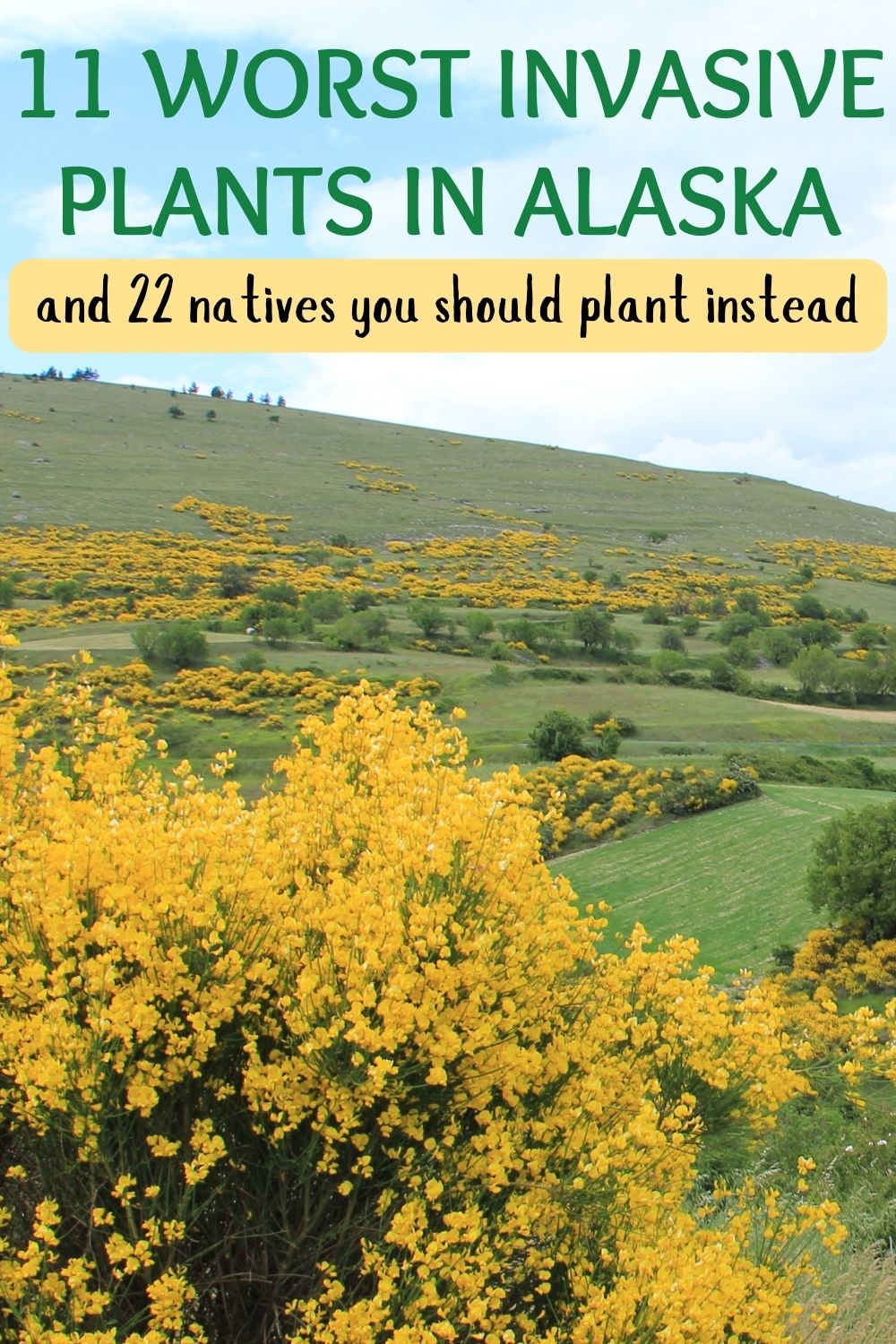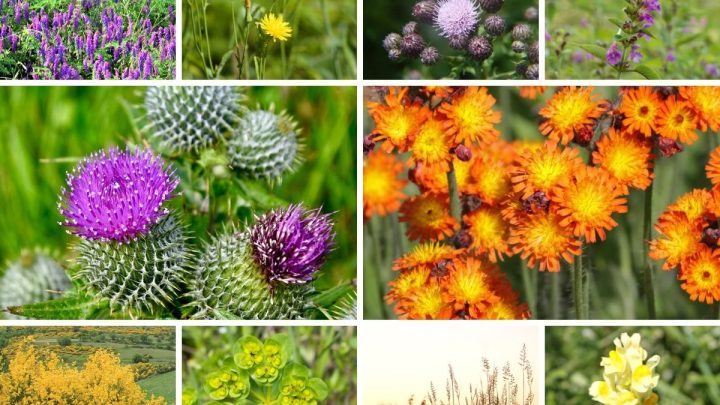Known as “The Last Frontier,” Alaska is home to beautiful and important ecosystems that have been labeled as conservation areas, national forests, and state and national parks. These vast wild areas host remarkable biological diversity and provide important sources of income for the people who live in this state. Unfortunately, invasive plants in Alaska pose a threat to native habitats and the wildlife and people who rely on them.
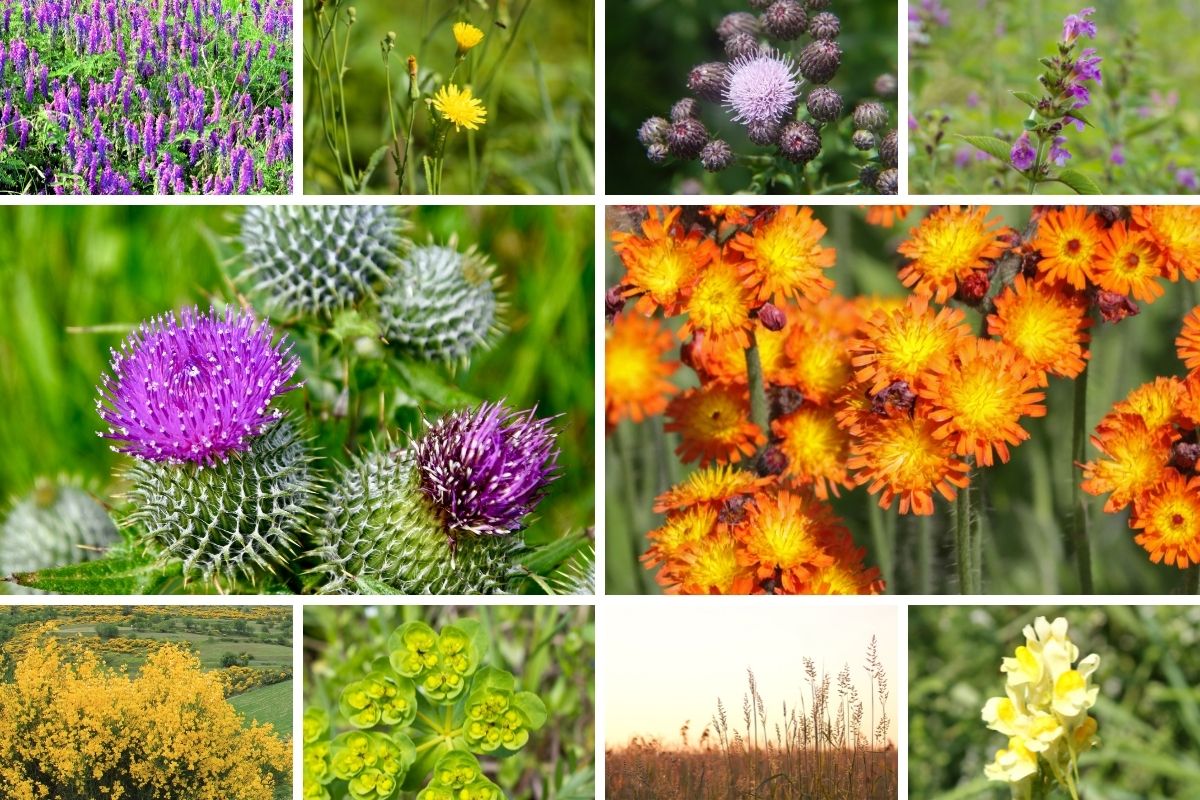
These aggressive nonnative species are introduced by humans, whether intentionally or by accident, and continue to spread with the help of humans or through natural means. Either way, invasive plants displace native species, alter habitats, and devastate industries like agriculture, fishing, and outdoor recreation that rely on natural resources.
Invasive Plants in Alaska
While numerous invasive plants cause havoc in Alaska, the following list contains some of the worst according to the Alaska Plant Materials Center and the USDA Forest Service.
1. Bird vetch (Vicia cracca)
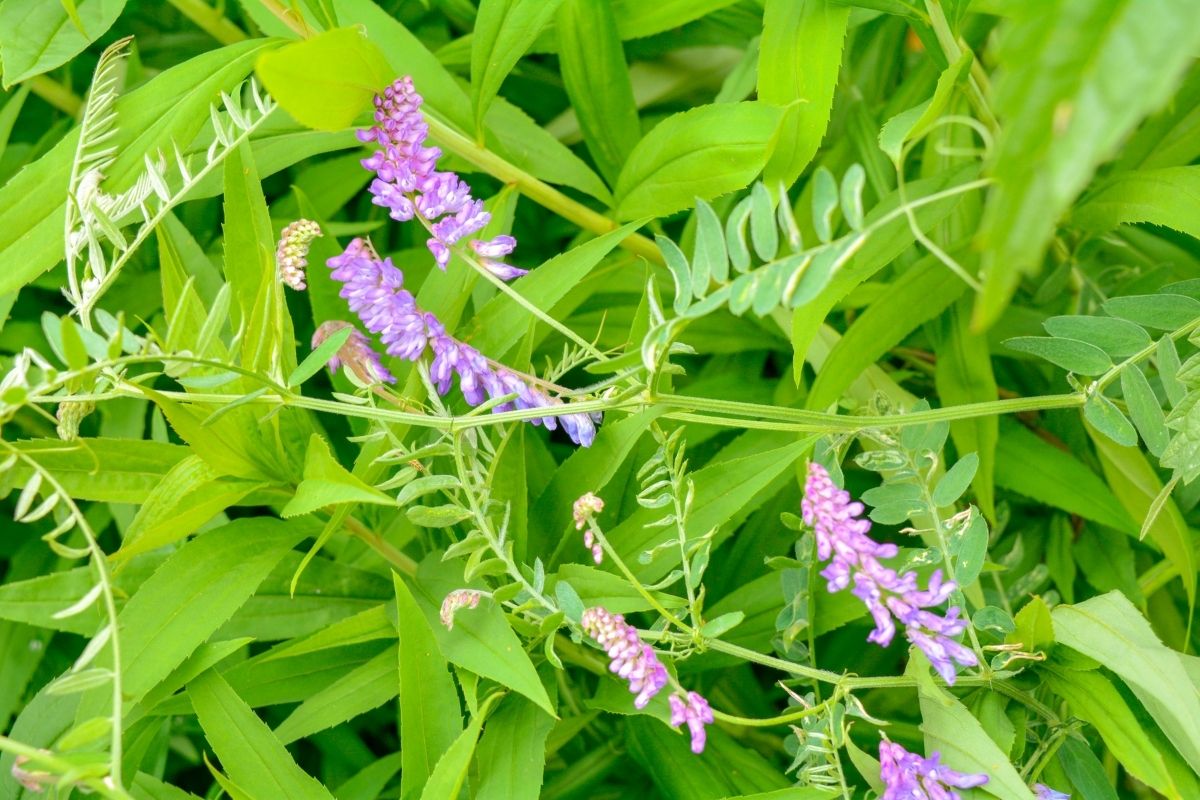
An aggressive climber, bird vetch covers trees and bushes as well as fencing, outcompeting native plants in disturbed areas like roadsides, hedgerows, and pastures. Hand-pulling is effective for small patches, while larger infestations require mowing and herbicide application.
Native plants with similar purple, tubular flowers include alpine sweetvetch (Hedysarum alpinum) and fireweed (Chamerion angustifolium).
2. Bull thistle (Cirsium vulgare)
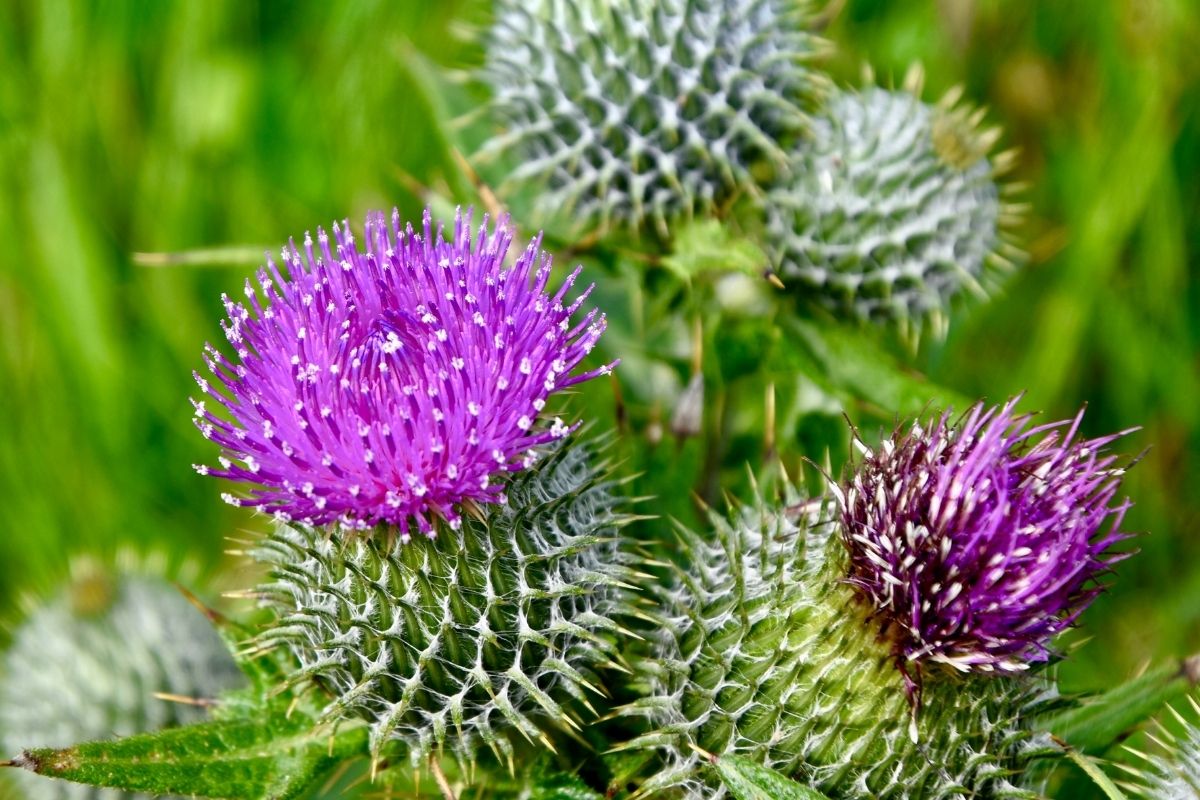
An erect biennial, bull thistle sends a taproot deep into the soil and forms a large, prickly rosette aboveground. It spreads by seed into ditches, roadsides, and fields, displacing native vegetation and reducing forage for livestock. Effective management practices include hand-pulling or mowing for four consecutive years or targeted application of herbicide.
Replace these thorny purple flowers with native alternatives like Siberian aster (Eurybia sibirica) or pussy toes (Antennaria dioica).
3. Canada thistle (Cirsium arvense)
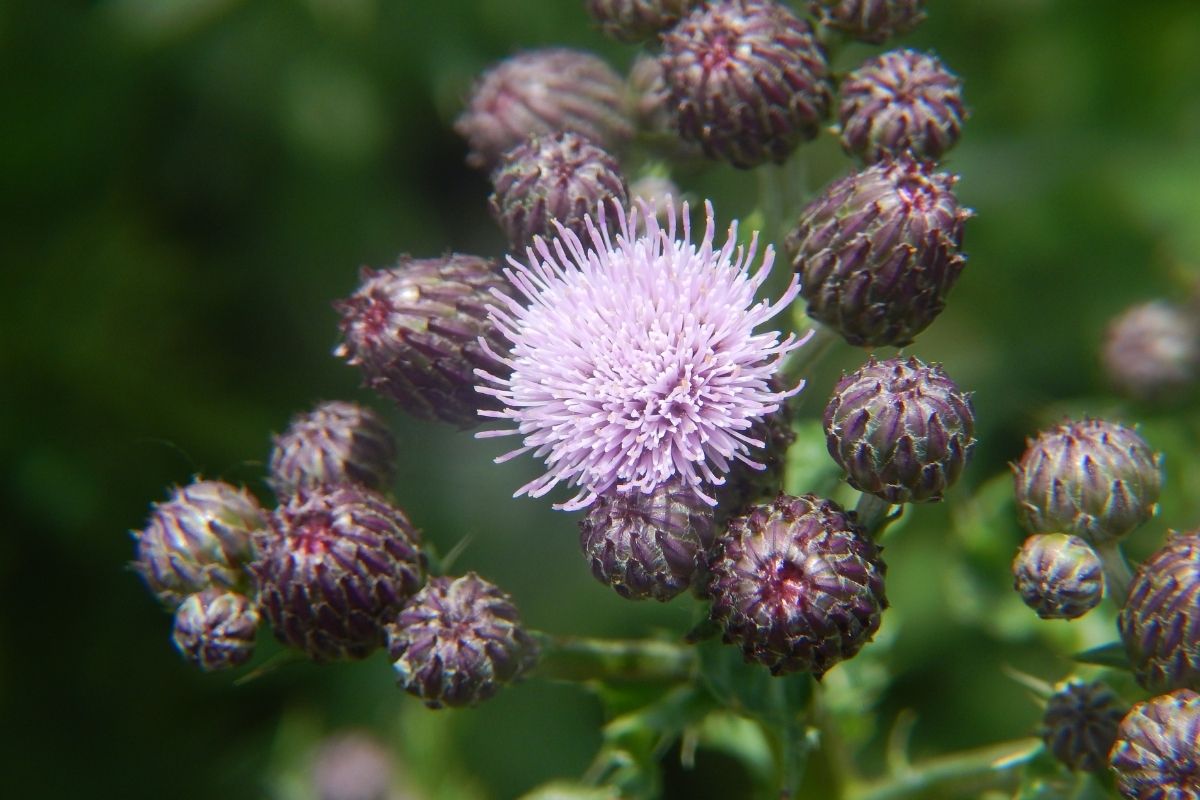
Growing up to five feet tall, Canada thistle features ridged, branching stems and deeply lobed leaves with spines and wooly undersides. It has pink to purple flowers and suppresses surrounding plant growth. Extremely difficult to control, it can best be removed through a combination of methods.
Choose native tall, purple flowers like blue gilia (Gilia capitata) or Menzies’ burnet (Sanguisorba menziesii).
4. Toadflax (Linaria vulgaris)
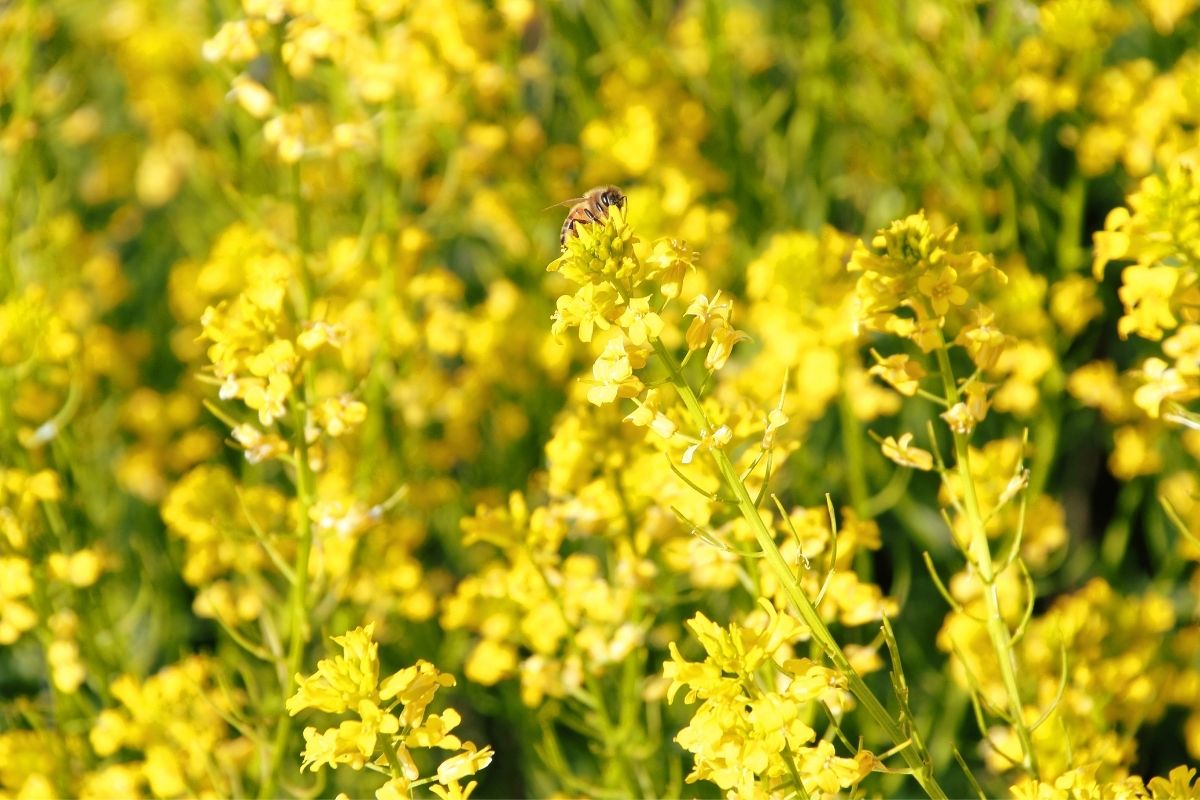
Toadflax produces spikes of yellow flowers resembling snapdragons at the top of each two-foot, leaf-covered stalk. Spreading by seed and rhizome, it forms dense colonies and is toxic to livestock. Hand pull small infestations or use a combination of cutting, mowing, and tilling.
Similar yellow-flowering native plants include the yellow monkey flower (Mimulus guttatus) and Canada goldenrod (Solidago canadensis).
5. Hempnettle (Galeopsis tetrahit and G. bifida)
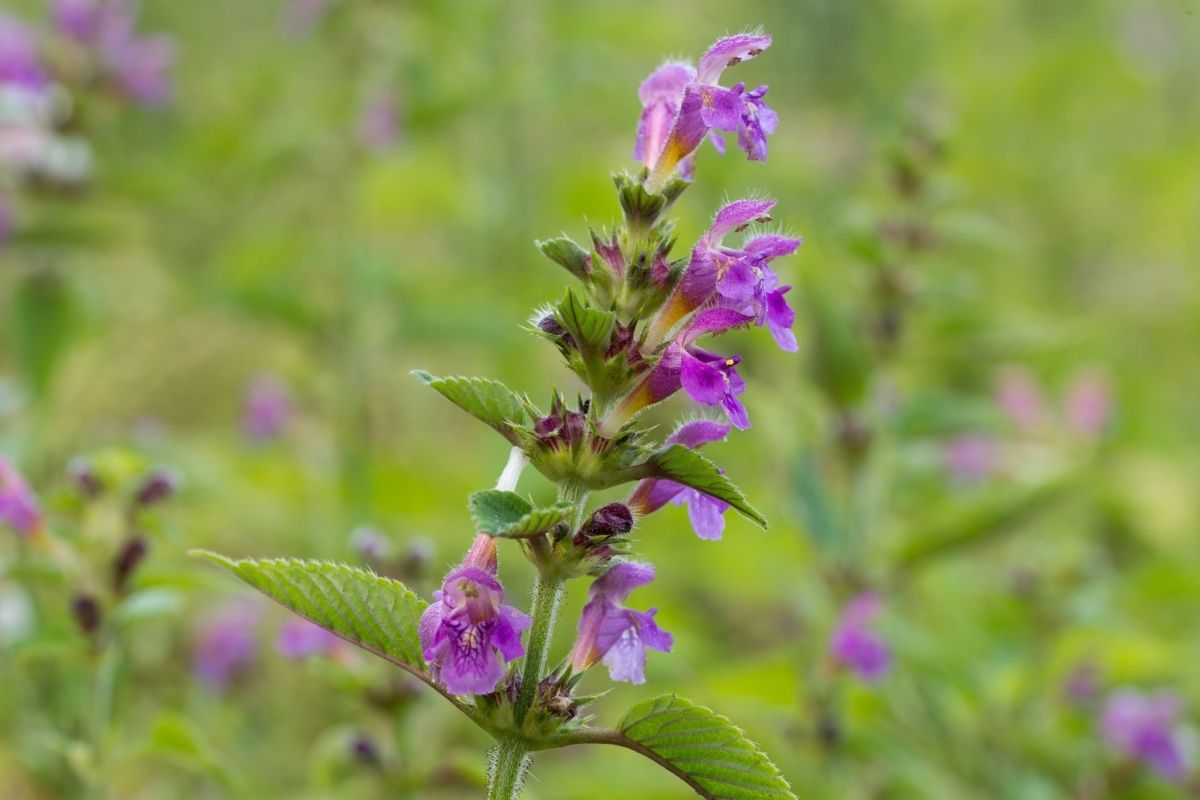
Both brittlestem and splitlip hempnettle feature taproots, hairy leaves, and dense clusters of flowers featuring five fused petals. Hempnettles infest agricultural fields and marginal and disturbed sites. To control, clip or mow plants before seeds set.
Selfheal (Prunella vulgaris) and purple monkeyflower (Mimulus lewisii) offer attractive native alternatives.
6. Leafy spurge (Euphorbia esula)
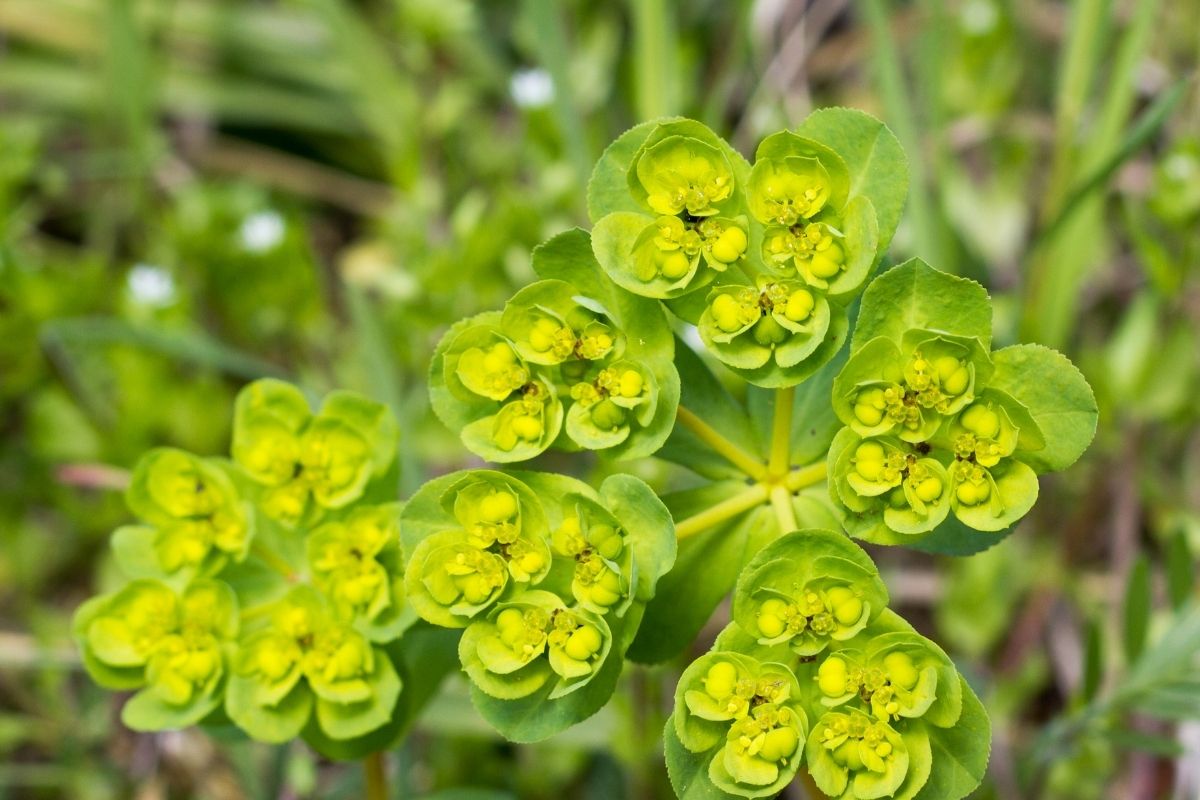
A deeply rooted and long-lived perennial, leafy spurge has vigorous rhizomes that make it extremely difficult to remove. Its pale, narrow-leafed stems infest pastures, prairies, and disturbed areas and feature yellow flowers with paired, heart-shaped bracts. Control requires cultivation before plant emergence or herbicide.
Plant natives like tall cinquefoil (Drymocallis arguta) or marsh marigold (Caltha palustris).
7. Orange hawkweed (Hieracium aurantiacum)
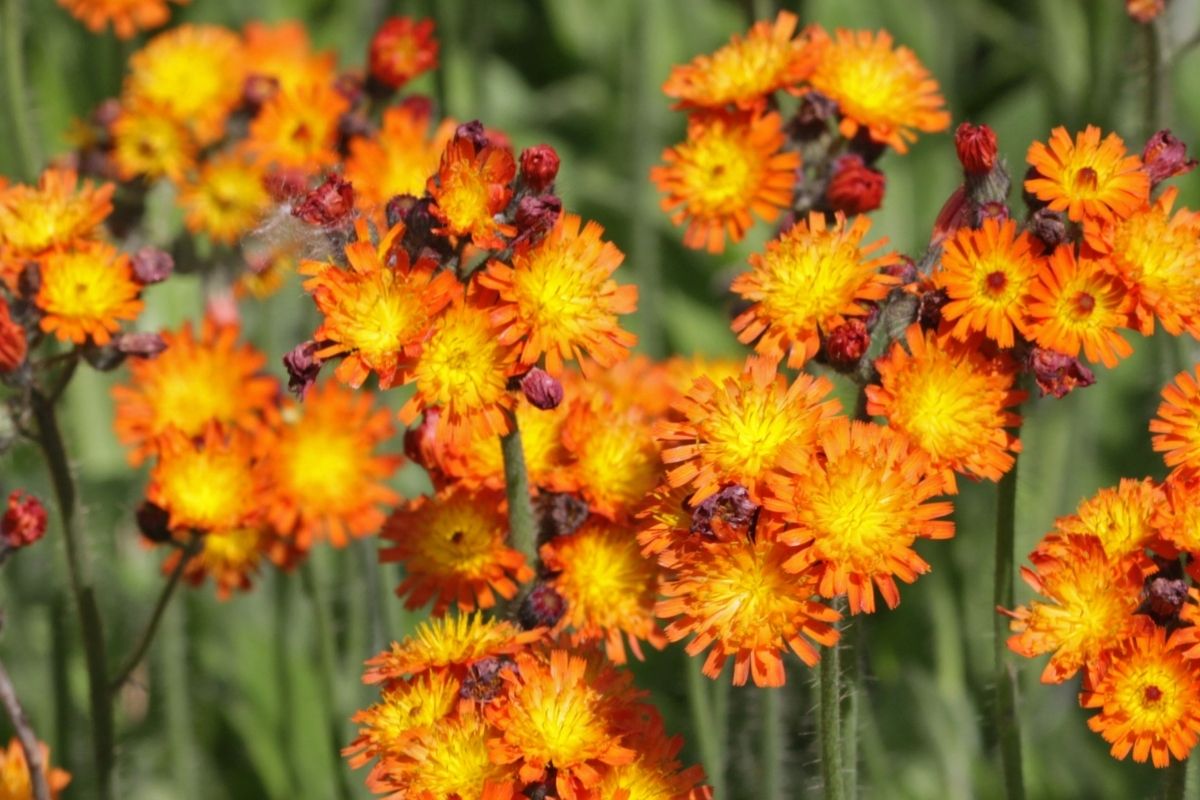
With its fiery, buttonlike flowers, orange hawkweed certainly makes a statement. Unfortunately, this rhizomatous flower escapes gardens and crowds out native plants in areas with disturbed soil. Management typically requires herbicides, though thorough hand-pulling can be effective on small patches.
Replace with equally vibrant native plants, such as great burnet (Sanguisorba officinalis) or coastal wallflower (Erysimum capitatum).
8. Perennial sowthistle (Sonchus arvensis)
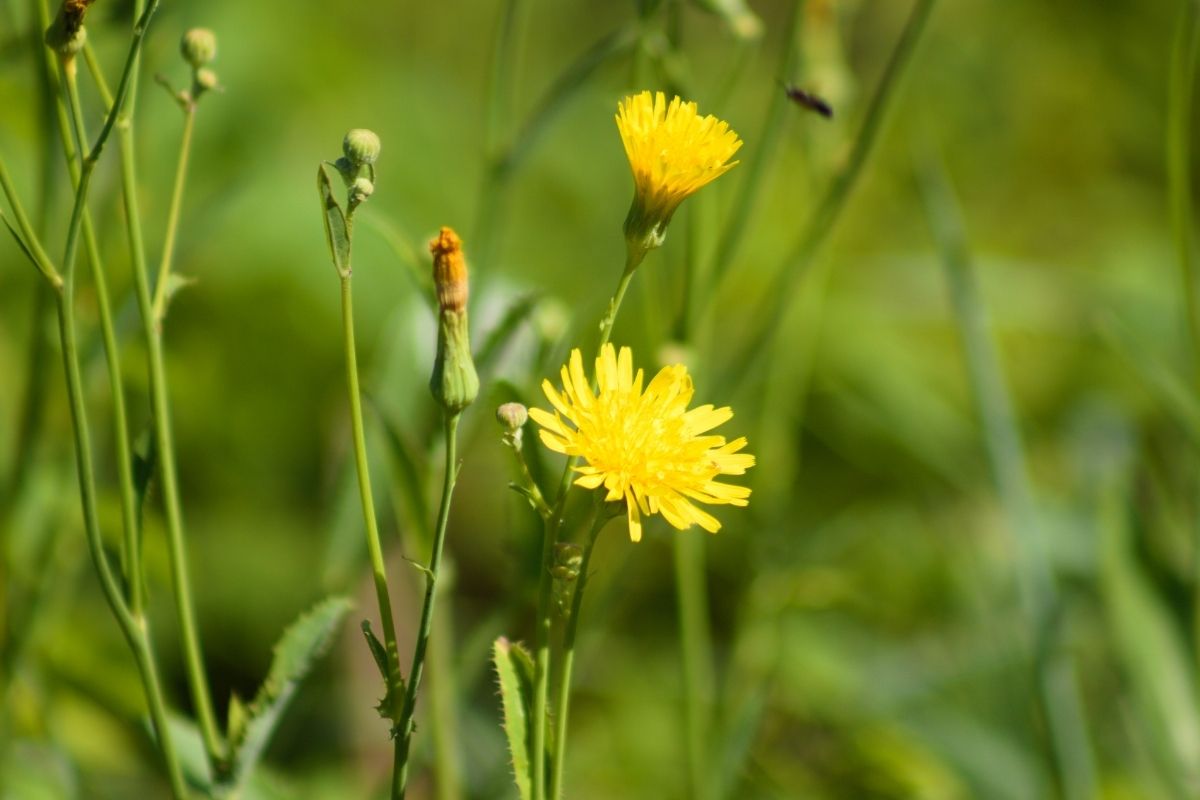
Resembling a large dandelion, sowthistle invades gardens, crop fields, roadsides, river and lake shores, and other disturbed areas. Manual and mechanical control methods seem to be the most effective.
Grow native yellow paintbrush (Castilleja unalaschcensis) or giant marsh marigold (Caltha polypetala) instead.
9. Purple loosestrife (Lythrum salicaria)
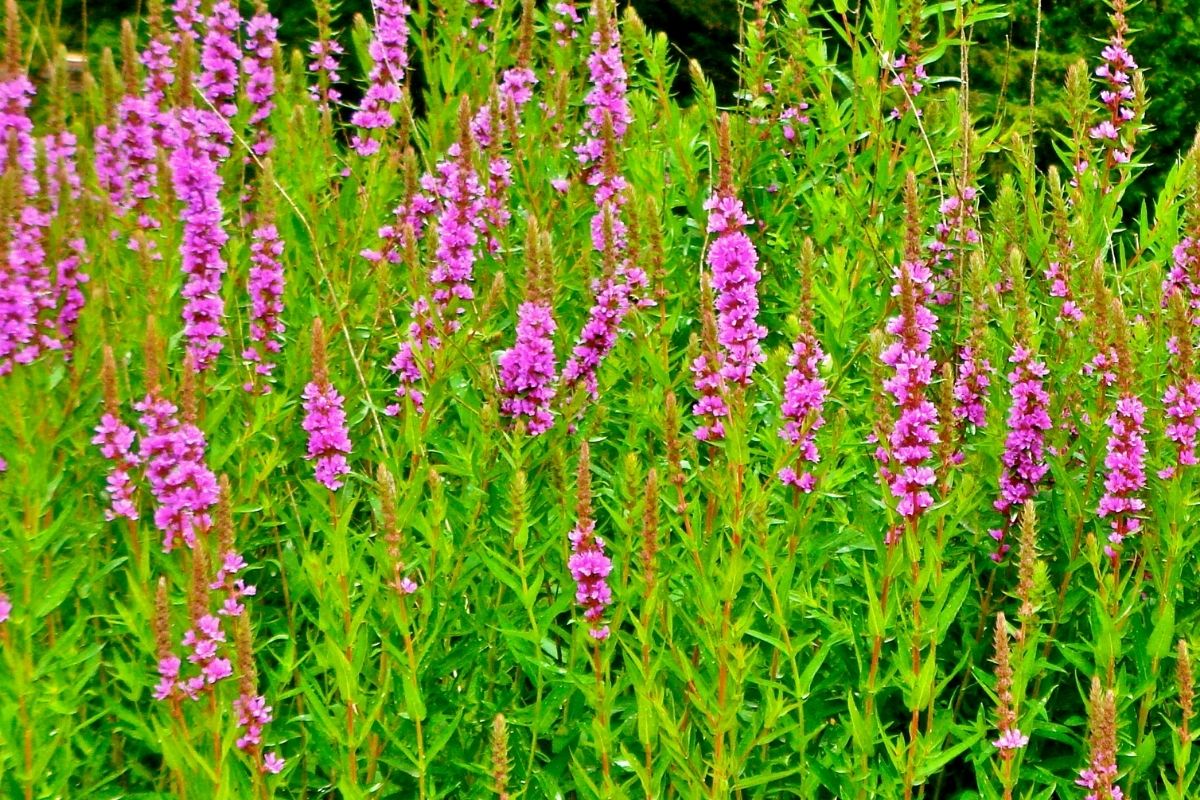
With its tall spikes of magenta flowers, purple loosestrife chokes waterways and degrades wildlife habitats. While large infestations are difficult to control, smaller patches can be hand-pulled.
Native plants with similar, striking flower spikes include marsh betony (Stachys palustris) and Bigleaf lupine (Lupinus polyphyllus).
10. Quackgrass (Elymus repens)
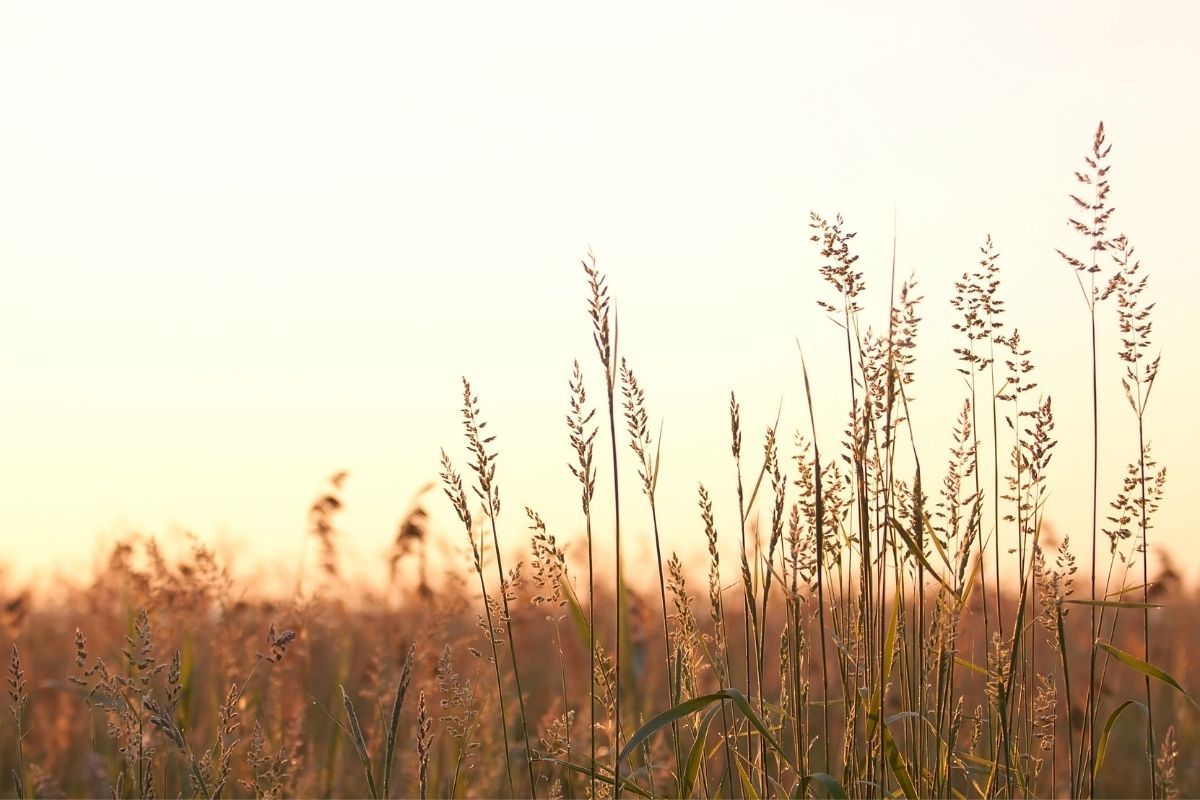
Quackgrass is widely distributed, appearing just about anywhere with moist soils and cool temperatures. Up to a half-inch wide, the flat, pointed blades have small auricles, and the flat spikelets form two long rows. Its aggressive rhizomes make eradication difficult, but effective methods include one or all of the following: burning, tilling, and herbicides.
Tufted hair grass (Deschampsia cespitosa) and bluejoint grass (Calamagrostis canadensis) are just two of many lovely native alternatives.
11. Scotch broom (Cytisus scoparius)
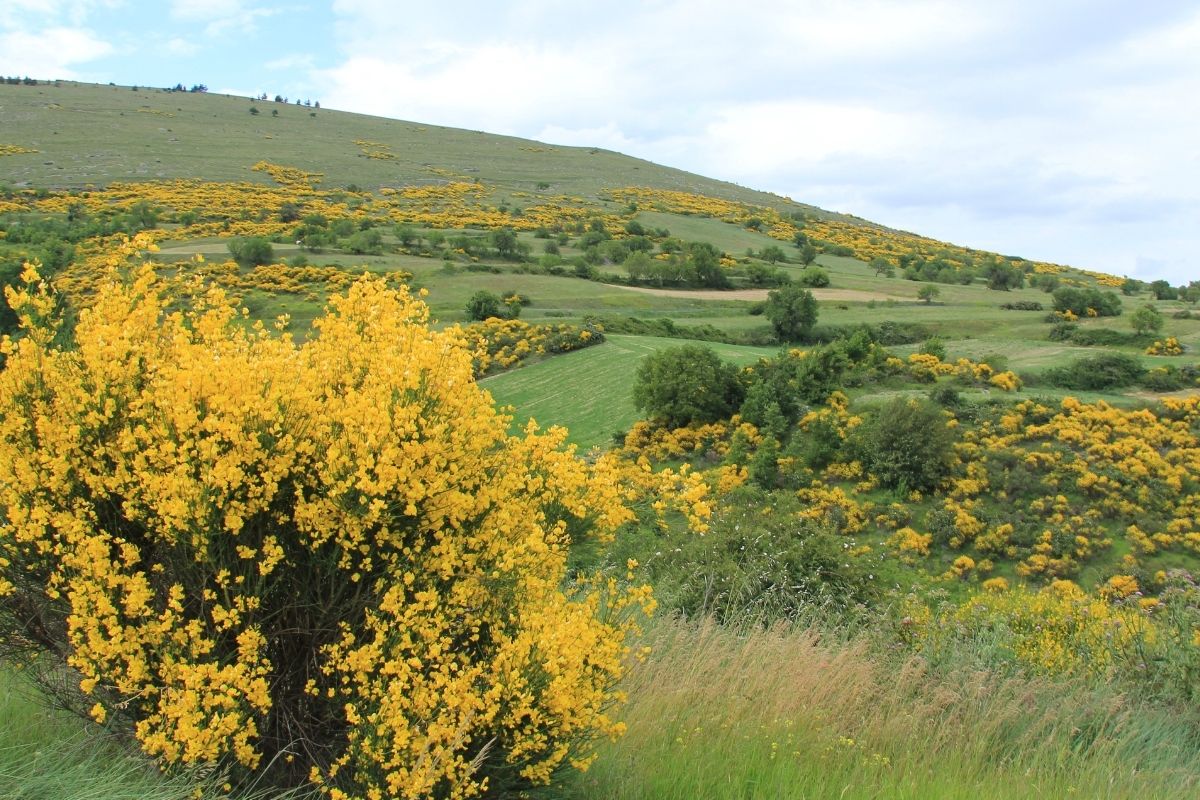
Invading pastures, forests, prairies, and thickets, Scotch broom prevents reforestation and increases the risk of fire. This woody shrub features erect, dark green branches and produces masses of tiny yellow flowers. Root segments can resprout, but multiple management techniques have proven effective, including mowing, hand-pulling, cutting, and herbicide application.
Replace with native flowering shrubs like red elderberry (Sambucus racemosa) or shrubby cinquefoil (Potentilla fruticosa).
While gardening may feel like just a hobby, it puts us in the unique position of being plant stewards. Learning about invasive species allows us to take action, and doing something as simple as replacing an invasive plant in your garden with a native Alaskan species can truly make a difference.
